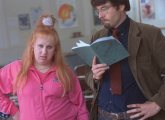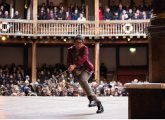Introduce your new Y7s to the thrilling world of scientific experimentation, with the help of Dr Joanna Rhodes inspiring suggestions…
PRACTICAL MAGIC
Introduce your new Y7s to the thrilling world of scientific experimentation, with the help of Dr Joanna Rhodes inspiring suggestions…
TODAY YOU WILL…
+ LEARN ABOUT THE EXCITEMENT AND ROLE OF EXPERIMENTATION IN SCIENCE
+ LEARN HOW TO CARRY OUT EXPERIMENTS SAFELY AND ANALYSE AND PRESENT THE RESULTS
In walk my year 7 class. Full of excitement and energy, their first question is “Are we doing a practical today Miss?” Over the next few years as they move up through the school the question never changes. This plan is dedicated to turning your students into skilled scientists and experimenters. The focus is not simply on how to do practical work but how to use it for both discovery and verification of scientific facts and information. Used well, experiments can support the curriculum and lead to a deeper more sophisticated understanding that helps students to apply their knowledge.
In this lesson, students will start to understand the excitement of experimentation and the role of experiments in discovering and verifying scientific information. They will learn how to carry our experiments safely and how to obtain information from the experiment that supports or refutes a hypothesis. Pupils will learn about techniques to analyse information such as creating tables and plotting graphs and how to use computer equipment such as a data logger. Cross-curricular links are developed with other practical subjects and also history and English as we look at significant scientific discoveries and how modern discoveries are published and subjected to peer review.
STARTER ACTIVITY
ARE WE DOING A PRACTICAL TODAY?
Before students come into the laboratory set it out with stations containing a range of equipment that they will use over the year.
Good stations to use include a microscope and slides; Bunsen burner and metal salts for flame tests; power pack and leads with a bulb and resistor; measuring equipment with measuring cylinders, volumetric flasks, pipettes and a balance; and a clamp stand, spring and slotted masses. Before students begin to handle the equipment ask them to go to each station and carry out a mini risk assessment based on what they can see. It helps to encourage them to think of ‘Hazard, Risk, Precaution’: what could harm me, how could it harm me, what steps will I take to protect myself?
Allow students to feed back to each other in groups. Use the information generated to create some rules for the lab. Students will be more likely to buy into these having created them. Students then explore the laboratory in groups with a mini experiment to do at each station.
The activity allows students to become familiar with a range of equipment and it will also give them the excitement of anticipating some of the activities that they will be doing in future science lessons.
MAIN ACTIVITIES
MAKING DISCOVERIES
In this activity students investigate some major scientific discoveries. Ask them to log onto Factmonster [Additional Resource 1] and pick one of the summaries including: gravity; electricity; bacteria and health; evolution; the theory of relativity; the big bang theory; discovery of penicillin; and the structure of DNA. Students should then investigate their chosen theory, focusing on the experiments that scientists carried out. They should then produce a presentation. This could be a PowerPoint but encourage students to explore other ways of presenting, too, including acting out a short play of their own or using a scripted play from the ASE [AR2]; producing a Prezi [AR3] and delivering a TED style presentation [AR4]; or designing the front cover of a newspaper announcing the discovery with fabulous graphics from Make the Front Page [AR5].
TESTING A HYPOTHESIS
In this activity students come up with ways to test their own hypothesis. Examples include simple relationships between the height a ball is dropped from and the height it rebounds to; the size of nettle leaves growing in the sun or in shade; and the resistance of a light bulb and the current passing through it. Initially students should investigate what makes a good hypothesis, an example of how to do this can be found at Science Kids at Home [AR6]. They should then design an experiment using a model you have provided which could be the superb worksheet produced by Holt, Rinehart and Winston [AR7]. Developing students’ scientific literacy is a vital process and introducing new vocabulary about the variables they will be testing is appropriate at this stage.
Students should become familiar with the terms independent, dependent and control variable and how these relate to both the measurements they will make and how they will make the experiment a fair test. Science Buddies has a website to help with an excellent range of examples and descriptions in language that students will find easy to understand [AR8].
HOME LEARNING
Pitching for a prac!
The Nuffield Foundation [AR12] in partnership with the Institute of Physics, Royal Society of Chemistry and the Society of Biology has produced sheets for practical work. Give students the web address and ask them to find a practical that inspires them. They should produce a 3-minute pitch for the practical of their choice. Students can then vote for their top three experiments to do in lesson time or as a science club activity. This develops students’ own sense of discovery as they can investigate experiments that fascinate them.







